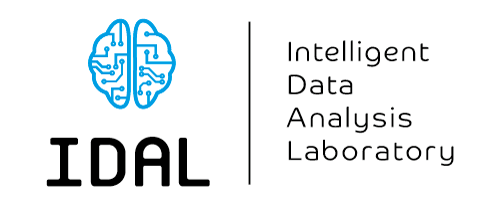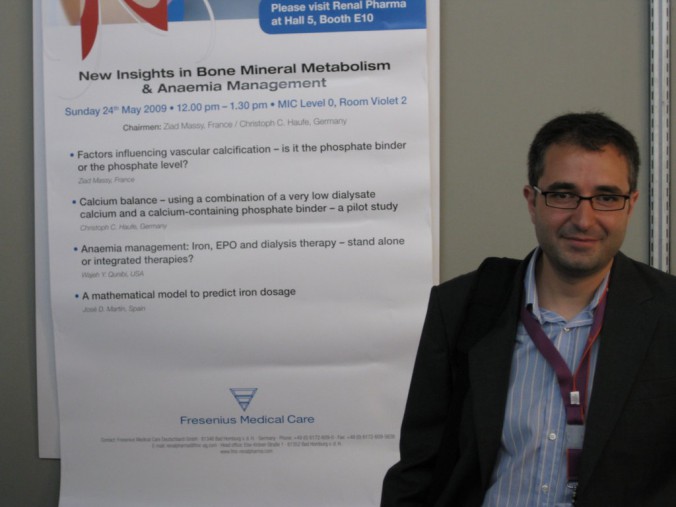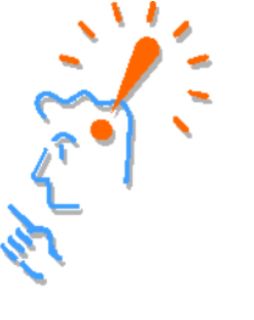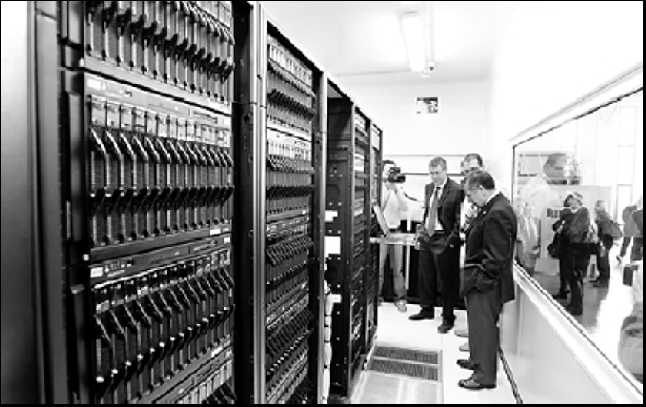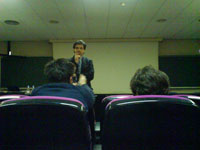Jose D. Martin, from IDAL, was invited by Fresenius Medical Care to a invited session in New Insights in Bone Mineral Metabolism and Anaemia Management, within the Worl Congress in Nephrology hold in Milano (Italy) in May 22-26. The speech was abot mathematical models to predict iron dosage.
Page 14 of 14
Some IDAL members will attend the International Joint Conference on Neural Networks in Atlanta (USA) in June 09. More information in http://www.ijcnn2009.com/
Meet us at the World Congress of Nephrology, that will be held in Milan (Italy) in May 09. All the team will be present in this meeting. You can gather more info in http://www.wcn2009.org
Idal has signed a initial contract of research with an important multinational of adversing for applyin Machine Learning to publicity campaigns. Preliminar results have been yielded recently, and currently future research is bein discussed.
IDAL has signed a contract with a private, multinational pharmaceutical company for optimize the dose drug administration. The contract will last for two years (2008-2009) and includes helping personal. Technical data is confidential.

The deadline of The Handbook of Research on Machine Learning Applications and Trends: Algorithms, Methods and Techniques has been extended to 1 April. Please download the call for papers for further information.
Nowadays became crucial that Search Engines (like Google or Yahoo) were able to index your site in order to appear in searches. CMS like Joomla generate web content on-the-fly, so searchers often do no access the site and so do no include them in the searches. Now a Search Engine Optimization (SEO) system have been activated, so it is expected that idal start to appear in the searches during next weeks.
The Handbook of Research on Machine Learning Applications and Trends: Algorithms, Methods and Techniques will feature chapters authored by specialists in the different ML fields offering an in-depth description of key terms and concepts related to different areas, issues and trends regarding machine learning applications, methods, and techniques. The foremost contribution of the handbook will be the chapters especially devoted to describing the practical applications of ML which have only been briefly mentioned in previous publications on ML that tend to focus on theory.
This book is tentatively scheduled for publishing by IGI Global in 2010 as part of the Information Science Reference imprint. IGI Global (formerly Idea Group Publishing), www.igi-global.com, is the publisher of the IGI Publishing (formerly Idea Group Publishing), Information Science Publishing, IRM Press, CyberTech Publishing, Information Science Reference (formerly Idea Group Reference), and Medical Information science Reference imprints.
Please submit all abstracts electronically to the editors at: idal(at)uv(dot)esDonwload the Call for Chapters
“Tirant” is one of the top 500 most powerful computers in the world and the seventh largest integrated into the Spanish Supercomputing network. The super computer has the scientific power equivalent of 512 conventional computers. Although its size is not spectacular, the calculations it can perform are immense and now researchers have a tool to work on finding solutions to problems that are impossible calculate with an ordinary computer. The Tirant is installed on the campus of Burjassot, where IDAL is also located, and will be used for the study of proteins, drug design; DNA; climate change and more. General secretary of Science and Technology, Francis Marcellán, explained that the capability of the computer not only offers benefits to the world of science, “but is an investment in society.” The supercomputer installed at the University of Valencia cost 1.2 billion euros.
On Feb. 15th Prof. Paulo Lisboa, from Liverpool John Moores University, gave a talk at the conference room of Faculty of Pharmacy in University of Valencia, invited by IDAL members under the Master on Ecology in the aforementioned university. The subject of the talk was Knowledge Discovery. Data are often collected or a specific purpose, for instance classification. However a full understanding of the data set requires more than just a benchmark of classifiers. The talk introduced data from an observational longitudinal cohort study to explain how to define risk stratification for time-to-event data, coninuing with automatic rule generation to explain the strata and ending with an integrated interface that adds also a domain-specific visualization of the complete database. Knowledge discovery is applicable to many different fields, as it hans bee shown in the talk. Among other case studies, the prediction of the ecological status of human-altered streams and its rule-based interpretation was introduced.
